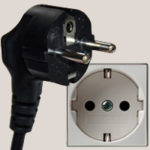Know before you go
Croatia
General Information
Croatia is located on the Balcan Peninsula in Southern Europe bordering Slovenia, Hungary, Serbia, Bosnia and Herzegowina and Montenegro. It has over 1000 islands on the Adriatic Coast with only 48 being inhabited. Its capital and largest city is Zagreb. While Croatia is a member of the European Union, it is not part of the Schengen Agreement. They drive on the right side of the road.
Visa
Holders of a EU passport don’t require a Visa. For holders of a different passport check out this link to see if you are required to apply for a visa or not or contact your ministery of foreign affairs.
Watch Geography Now!
The video will give you a good first overview of Croatia.

Power
Croatia uses Type C and F („Schuko“) plug outlets. They also work with Type E. The voltage is 230 Volt and the frequency is 50 Hz
Language
The official language of Croatia is Croatian. You can get by with English just fine though.
| Croatian | English |
|---|---|
| Bok! | Hello! |
| Bok! | Bye! |
| da | yes |
| ne | no |
| Hvala! | Thank you! |
| Molim! | You're welcome! |
| Oprosti! | Excuse me! |
| Nazdravlje! | Cheers! |
Weather Forecast
Climate
Most of Croatia has a moderately warm and rainy continental climate. The coldest parts of the country are Lika and Gorski Kotar where snowy forested climate is found at elevations above 1,200 metres (3,900 feet). The warmest areas of Croatia are at the Adriatic coast and especially in its immediate hinterland characterised by the Mediterranean climate, as the temperature highs are moderated by the sea.
Average Temperature in Zagreb
Average Precipitation in Zagreb
Transportation
How to get there?
Croatias largest airport is Zagreb Airport (ZAG). It’s decently served within Europe. However, you might have a hard time flying directly to Zagreb from outside of Europe. The closest bigger airports would be Vienna International Airport (VIE) in Austria or Budapest Ferenc Liszt International Airport (BUD) in Hungary. Vieanna Airport is around 4 hours drive from Zagreb while Budapest is a little bit closer with 3:40h. It’s also easy to get to Croatia by bus or train.
Keep in mind that Croatia is not part of Schengen and there are boarder controls if you are traveling from Slovenia or Hungary. Especially on weekends in summer this causes huge traffic jams at the border. When travelling, try to avoid these busy times.
How to get around?
Cities in Croatia are small enough to walk everywhere. However, there are also public buses available. In Zagreb additionally, trams are available.
How to get from town to town?
For most visitors Croatias coast is where they want to go. Buses will take you to towns all along the Adriatic Sea. Considering the many beatiful towns an national parks like the Plitvice Lakes or Krka you should consider renting a car though. It’s rather cheap and you can stop anytime and anywhere you want.
Money, Money, Money

Currency
Croatia uses the Kuna as its currency. Check out the currency converter to find out about current exchange rates.
Accommodation
Depending on where you are staying prices will vary of course. Expect to be paying around 25€ per person per night.
Cash
Even though credit cards are widely accepted, you should still withdraw Kuna at an ATM. Cash is still king in many places like restaurants, markets and small shops. How much you will need of course depends on your spending habits. Expect to need around 30€ per day for food, transportation, activities and souvenirs. Some places might accept Euro, but you will end up paying more than if you had used Kuna.


